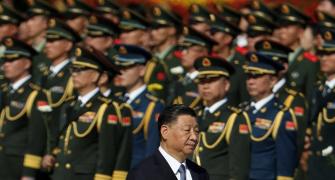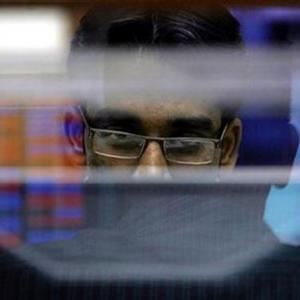So, what does 2016 have in store for the Indian markets? Will they be able to take a giant leap forward in the leap year, and what are the key risks?

With a fall of around six per cent in calendar year 2015 (CY15) in the S&P BSE Sensex, it has been a year of consolidation for the Indian markets. From their peak levels in the first quarter of CY15, the indices have tumbled nearly 13 per cent. It is after three years that the Indian benchmarks will see a loss in a calendar year.
The mid- and small-cap indices, however, outperformed their larger peers in CY15 with the S&P BSE Mid-cap and the S&P BSE Small-cap indices gaining around six per cent each.
Among major Asian indices, the S&P BSE Sensex was the fourth worst performing index in CY15 after Straits Times, which lost nearly 15 per cent, followed by Taiwan Weighted and Hang Seng. On the other hand, Shanghai Composite, CAC 40, Nikkei and the NASDAQ gained six per cent - 13 per cent.
So, what does 2016 have in store for the Indian markets? Will they be able to take a giant leap forward in the leap year, and what are the key risks?
While analysts remain positive on equities as an asset class, CY16 is likely to be a volatile year for equity markets, trying to find a balance between the divergent monetary policies of global central banks amid soft commodity prices and anaemic global growth, which they also think are the key risks financial markets will face in 2016.
India, most believe, is heading into a period of growth, with macro economic stability, but they do not think the markets will be able to replicate the gains seen in CY14. “I think the year will be marked with volatility for Indian markets, given that there will be a lot of factors beyond India’s control, such as the US Federal Reserve’s stance on rates, developments in China, global commodity prices, etc. These factors will have a bearing on the overall market direction. Amid all this, one can expect 10-15 per cent return in CY16, and this is our base-case scenario,” said Nischal Maheshwari, co-head of institutional equities and head of research at Edelweiss Securities.
Frank Benzimra, head of Asia equity strategy at Societe Generale, who believes Indian equities are a multi-year bull story, pegs the 2016-end S&P BSE Sensex target at 32,000, driven by capex cycle recovery. By 2017-end, he expects the 30-share index to hit 36,000 and then correct to 31,000 by 2018-end.
Look within
With the uncertainty surrounding the rate hike by the US Fed now over, analysts say the focus will shift back to domestic events in India. Going ahead, progress of key reforms and policy initiatives of the government at the domestic level and corporate results will have a bearing on the markets as well, they say.
“The focus will shift to the fundamentals of India. While the EM space, as a whole, may look less attractive than the US economy, India is likely to stand out, given the higher growth rates, positive impact of lower crude and other commodity prices, and a reform-oriented government,” said Kamlesh Rao, CEO, Kotak Securities.
Among the key issues is how banks’ asset quality problems are addressed, simplification and unification of tax laws through GST, doing away with retrospective tax laws and modifying labour laws. Manishi Raychaudhuri, managing director, Asian Equity Strategist at BNP Paribas, says: “As central banks eventually step away from injecting liquidity and supporting markets, governments shall have to step in with various policy initiatives. That’s happening in many countries – China is the brightest example. Similar initiatives seem to be picking up in India as well, albeit more slowly. Among different countries, we see maximum upside in China and India. Our December 2016 target for the Sensex is 29,135.”
As regards corporate earnings, Mahesh Nandurkar, executive director and India Strategist at CLSA, believes downgrades aren’t over but the pace of downgrades will certainly slow for FY17 as the economy shows signs of revival. He does not expect more than around five percentage points (ppts) downgrades for FY17 and pegs the final earnings growth at around 15 per cent.
Neelkanth Mishra of Credit Suisse shares a similar view. “Going ahead, market returns could track EPS growth. While earnings cuts may continue (mainly banks and materials), their pace should slow, in our view, and CY16 index EPS growth should settle at 13-14 per cent year-on-year (current consensus for CY16 is 19 per cent and for CY15 it is nine per cent). Once the pace of cuts falls under the trend EPS growth, absolute market upside can emerge,” he points out.









